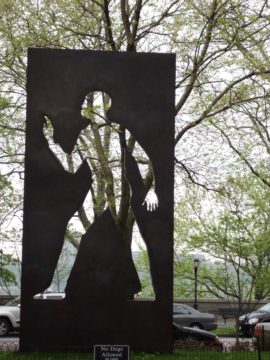R W B Lewis in The New York Review:
 Shadow and Act contains Ralph Ellison’s real autobiography—in the form of essays and interviews—as distinguished from the symbolic version given in his splendid novel of 1952, Invisible Man Some of the twenty-odd items in it were written as early as 1942, and not all of them have been published before. One or two were rejected by liberal periodicals, apparently because Ellison insisted on saying that Negro American life was not everywhere as hellish or as inert or as devastated by hatred and self-hatred as it was sometimes alleged; it is not unlikely that liberal criticism will be equally impatient with this new book. Most of the pieces, were, however, written after Invisible Man and in part are a consequence of it. They may even help to explain the long gap of time between Ellison’s first novel and its much awaited successor. There have been other theories about this delay: for example, an obituary notice by Le Roi Jones who, in a recent summary of the supposedly lethal effect of America upon its Negro writers, referred to Ellison as “silenced and fidgeting away in some college.” But he has not been silent, much less silenced—by White America or anything else. The experiences of writing Invisible Man and of vaulting on his first try “over the parochial limits of most Negro fiction” (as Richard G. Stern says in an interview), and, as a result, of being written about as a literary and sociological phenomenon, combined with sheer compositional difficulties, seem to have driven Ellison to search out the truths of his own past. Inquiring into his experience, his literary and musical education, Ellison has come up with a number of clues to the fantastic fate of trying to be at the same time a writer, a Negro, an American, and a human being.
Shadow and Act contains Ralph Ellison’s real autobiography—in the form of essays and interviews—as distinguished from the symbolic version given in his splendid novel of 1952, Invisible Man Some of the twenty-odd items in it were written as early as 1942, and not all of them have been published before. One or two were rejected by liberal periodicals, apparently because Ellison insisted on saying that Negro American life was not everywhere as hellish or as inert or as devastated by hatred and self-hatred as it was sometimes alleged; it is not unlikely that liberal criticism will be equally impatient with this new book. Most of the pieces, were, however, written after Invisible Man and in part are a consequence of it. They may even help to explain the long gap of time between Ellison’s first novel and its much awaited successor. There have been other theories about this delay: for example, an obituary notice by Le Roi Jones who, in a recent summary of the supposedly lethal effect of America upon its Negro writers, referred to Ellison as “silenced and fidgeting away in some college.” But he has not been silent, much less silenced—by White America or anything else. The experiences of writing Invisible Man and of vaulting on his first try “over the parochial limits of most Negro fiction” (as Richard G. Stern says in an interview), and, as a result, of being written about as a literary and sociological phenomenon, combined with sheer compositional difficulties, seem to have driven Ellison to search out the truths of his own past. Inquiring into his experience, his literary and musical education, Ellison has come up with a number of clues to the fantastic fate of trying to be at the same time a writer, a Negro, an American, and a human being.
It is hard at the best of times to be even two of those things; the attempt to be all four must be called gallant.
More here. (Note: At least one post throughout the month of February will be devoted to Black History Month. The theme for 2022 is Black Health and Wellness)
Note: Photograph of the sculpture Invisible Man on Riverside Drive in New York by Azra.
